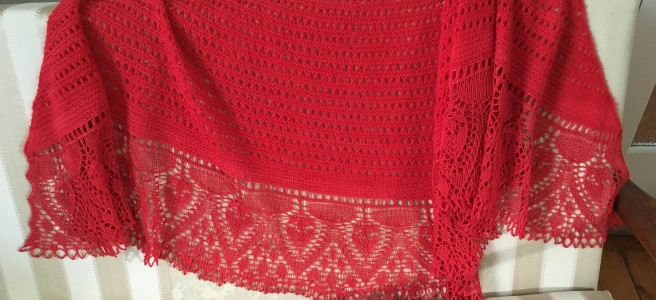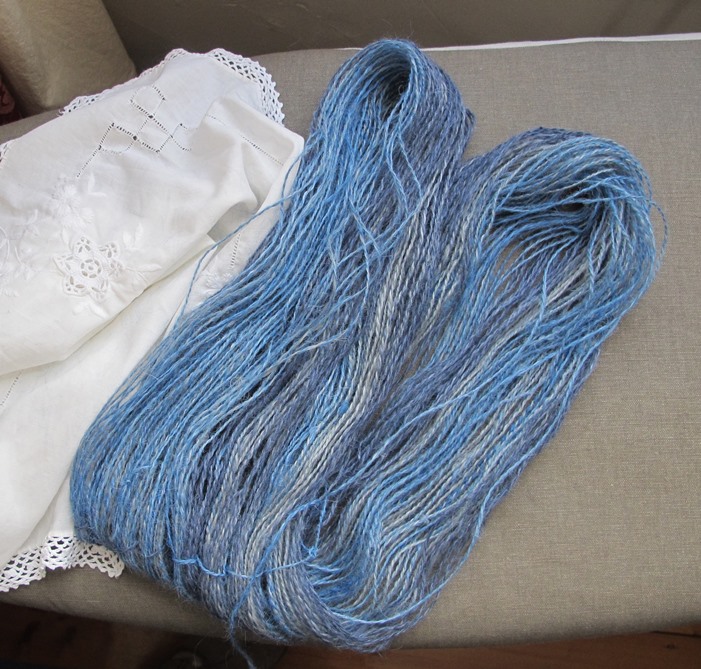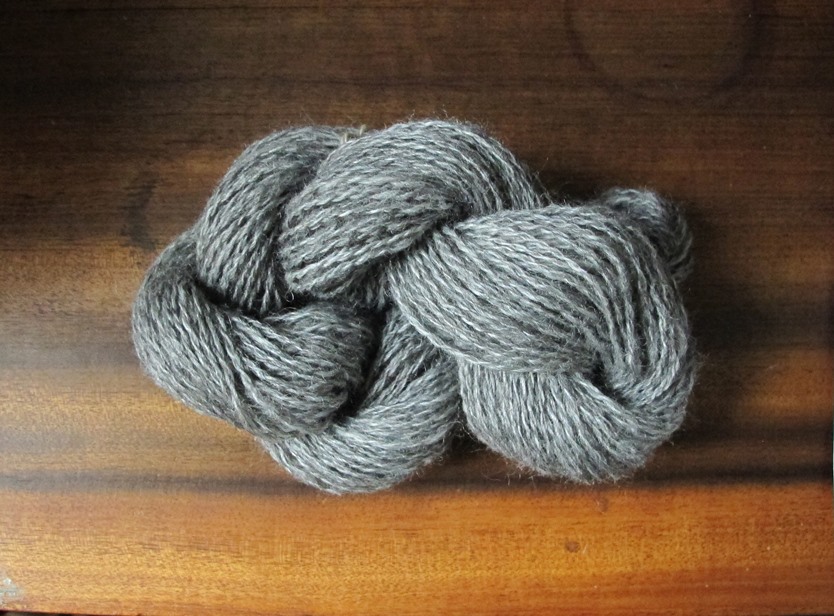Last winter I decided I wanted a brilliant red shawl. Just brightest red, no varigation. I did want some interest in the knitting though. I’d also been returning again and again to a pattern called Adularia which has a plain garter stitch body in wool and a deep, very pretty lace trim meant to be done in silk. I put those two thoughts together.
I had ~170g of palest fawn alpaca fleece which I washed, combed and spun, trying for a 4ply finished equivalent. This was back in January.
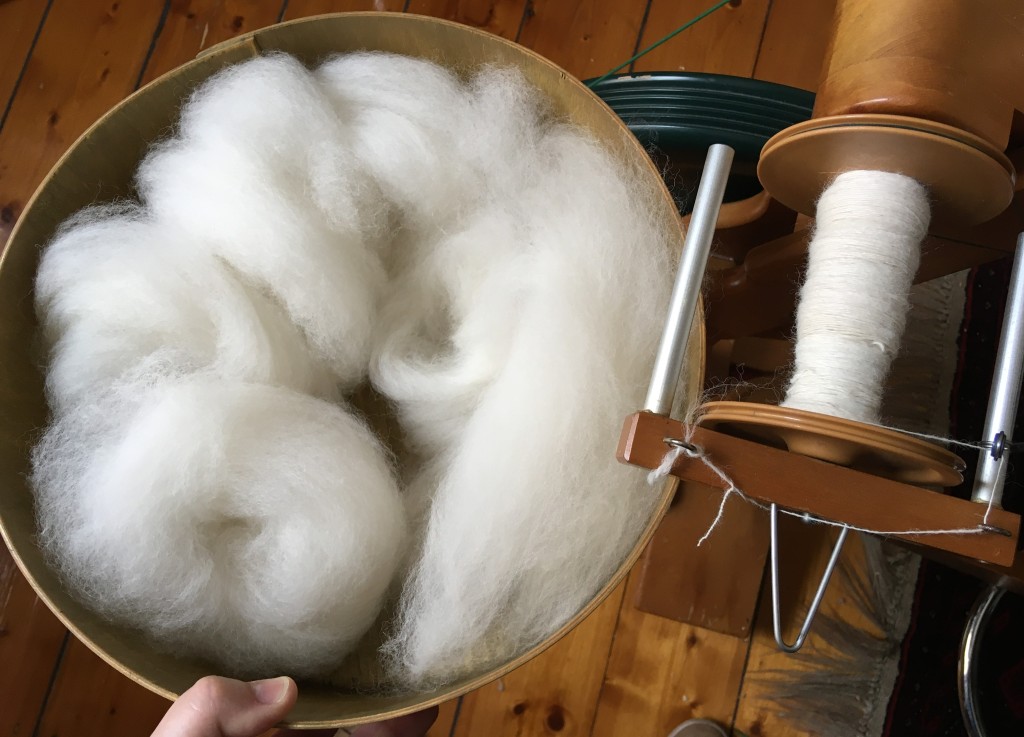
It came out beautifully and on target straight off the wheel, though it did bloom to become a bit boofier on wet finishing.
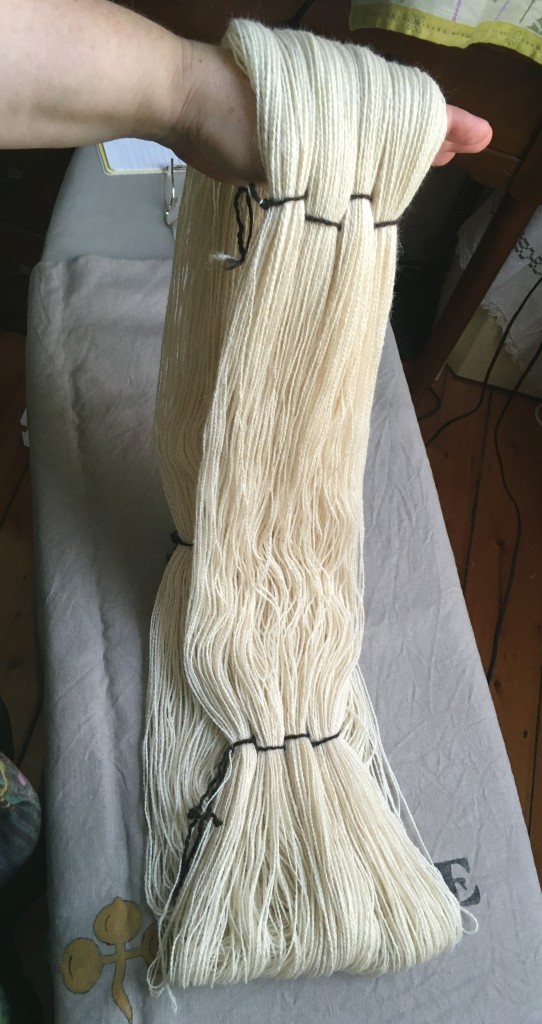
I dyed it with Landscapes dye “Desert Pea” which came out really well.
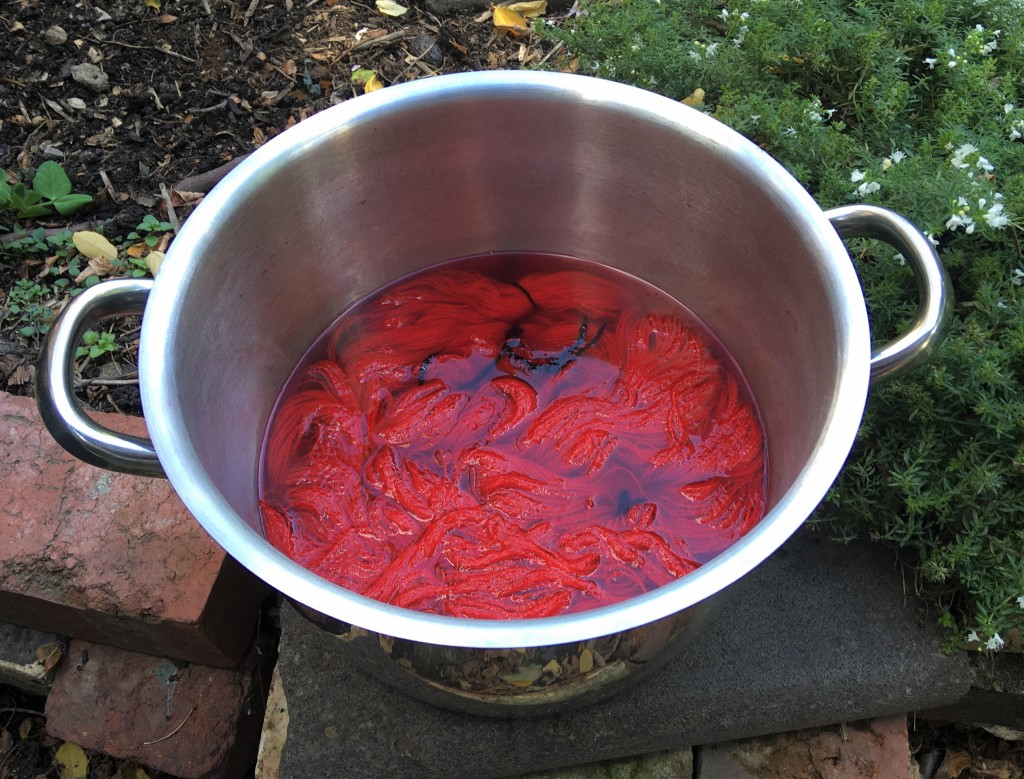
So, so bright and not blue tinted at all which is what I wanted. This is “my” red! It was such a marvellous contrast to the brilliant blue sky on the day.
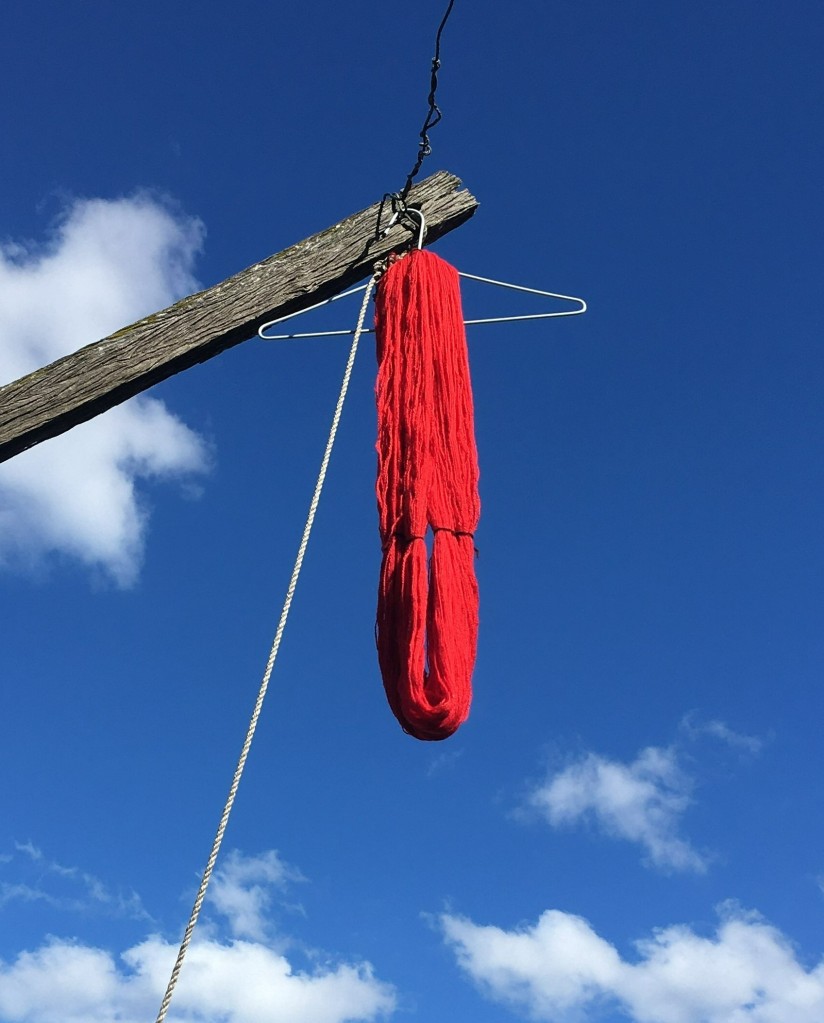
Knitting beginnings. I didn’t fancy doing so much utterly plain garter stitch. So I introduced a row of yarn over k2tog holes every sixth row.
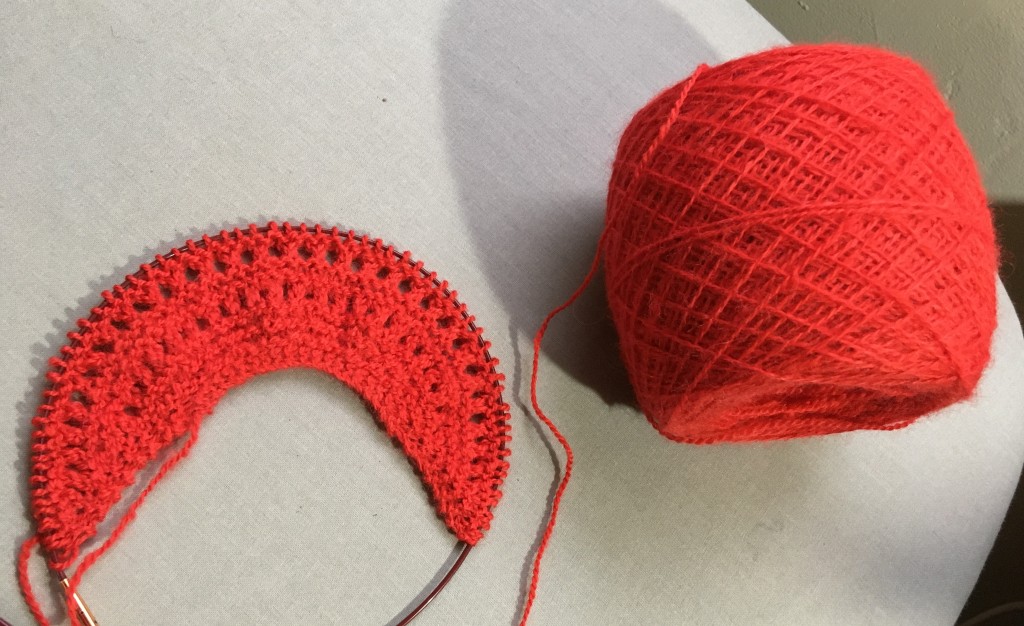
The silk was purchased from Colourmart, which is a dangerous mill end online shop based in the UK. I skeined off 116g (exact weight not important, I just wanted to make sure I had enough), scoured it and dyed it the same full strength Desert Pea as the alpaca. That came out a kind of dark coral pink, so I overdyed with food colours and very happily got something pretty close to an exact match.
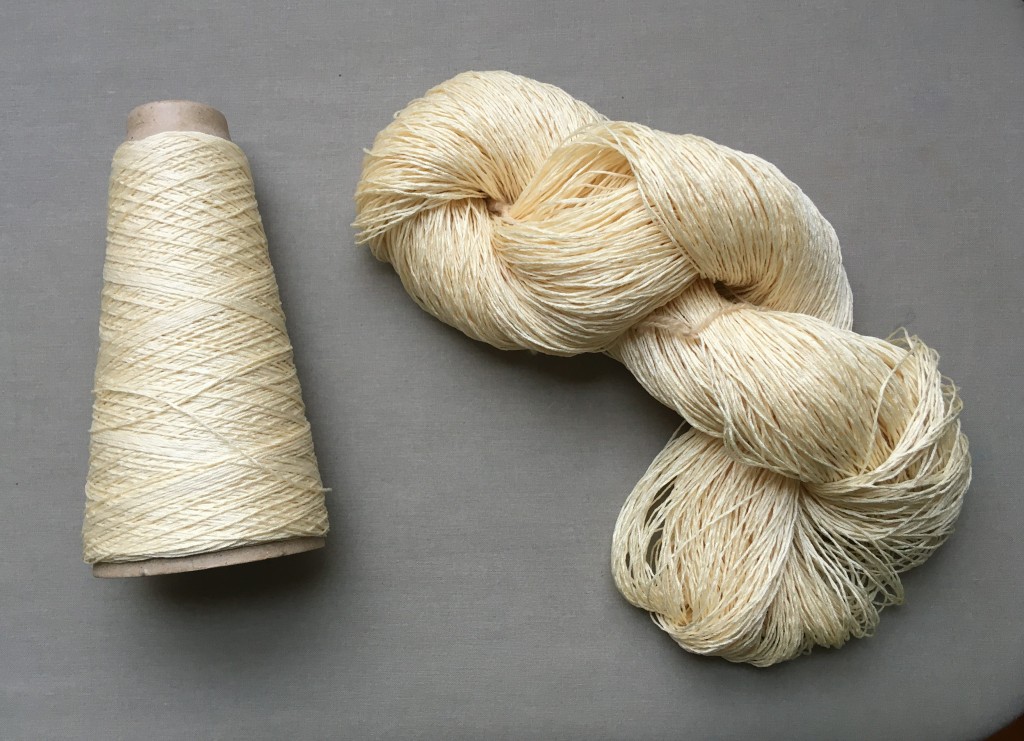
Alpaca at the top, silk below.
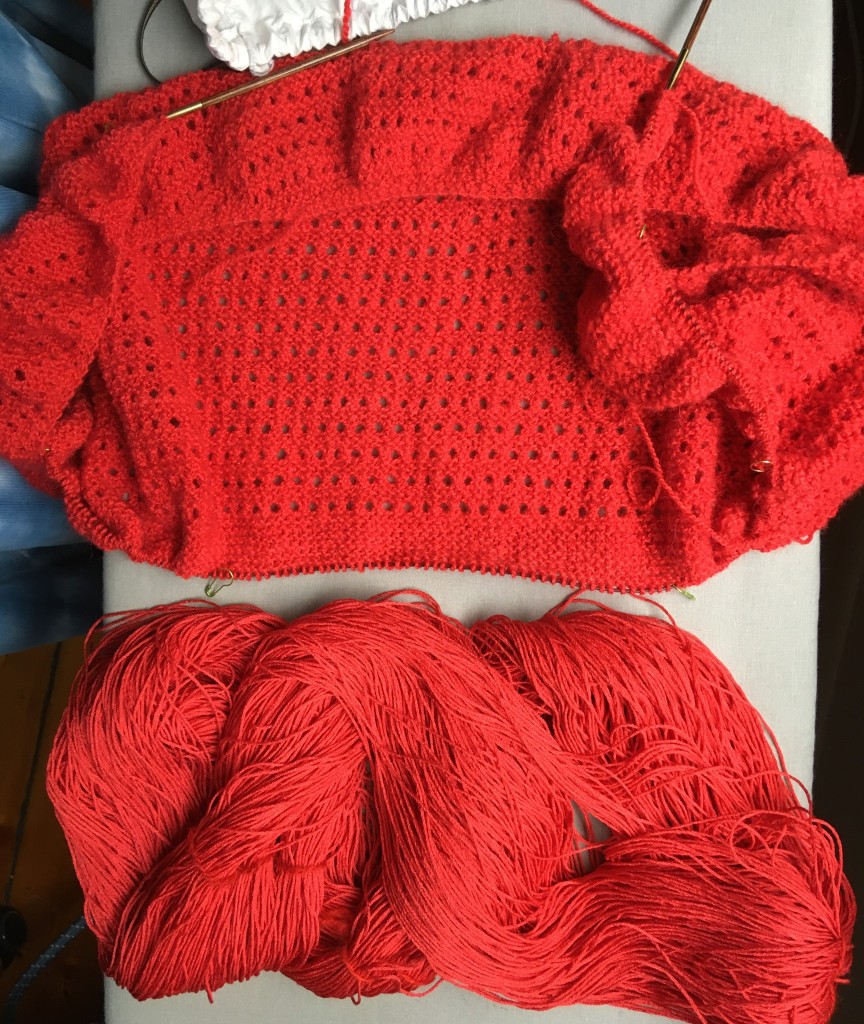
Here she is pinned out for blocking
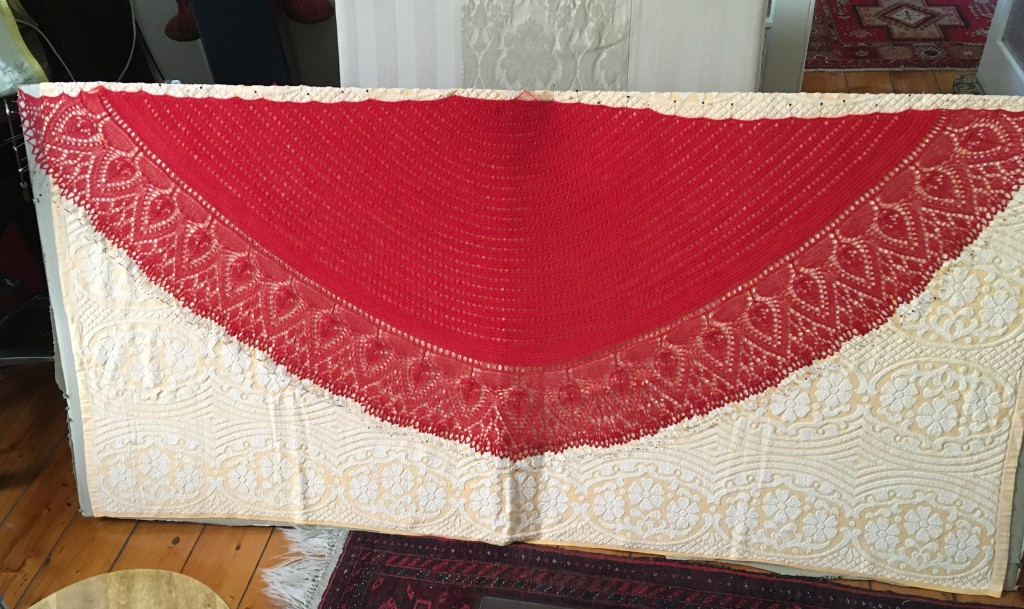
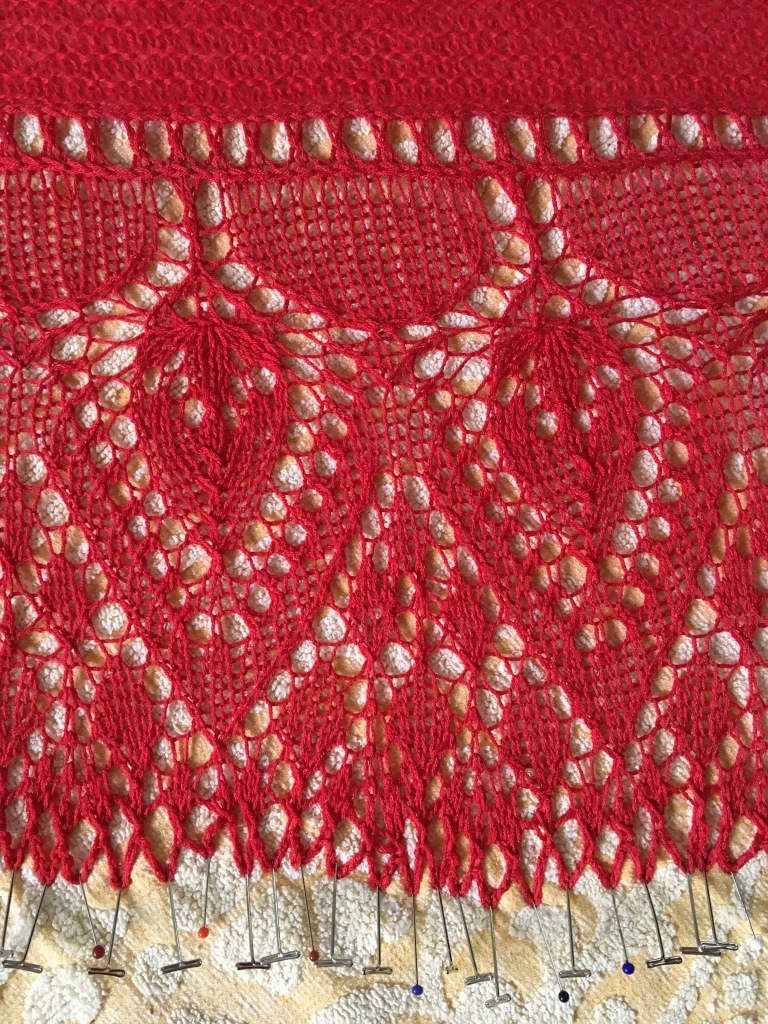
Done. I’m pretty pleased with it. About a month’s worth of spinning, some dyeing and something over two months to knit. Ideally the alpaca would have been a little finer. I had to go up a needle size to get a fabric that wasn’t too close, but that is really a bit loose for the silk. I still really like it though.
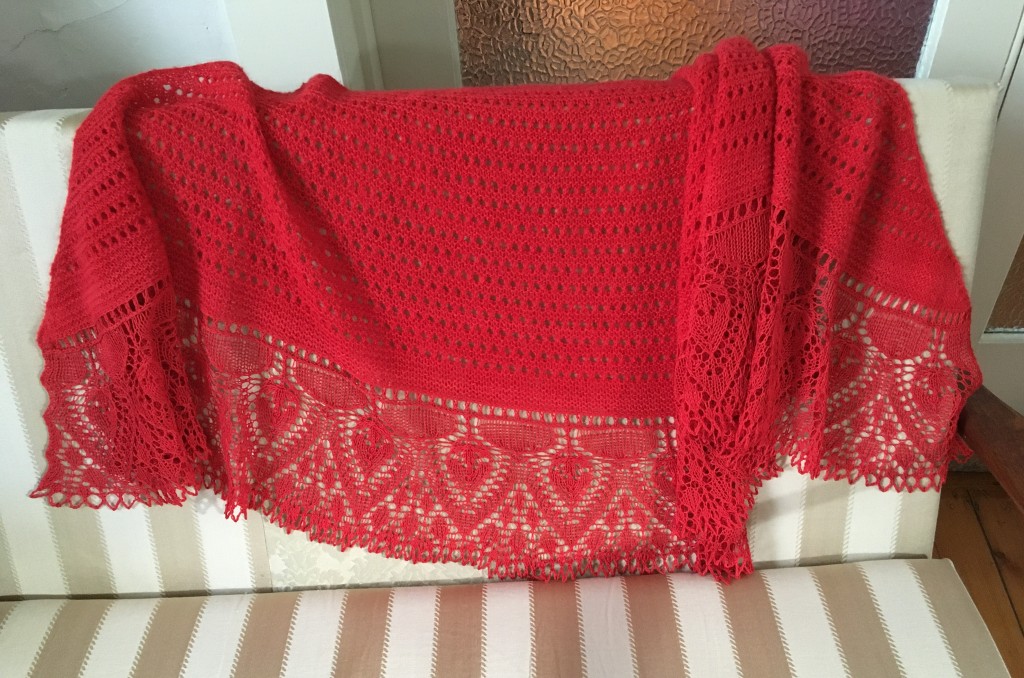
On me. It really is my red!
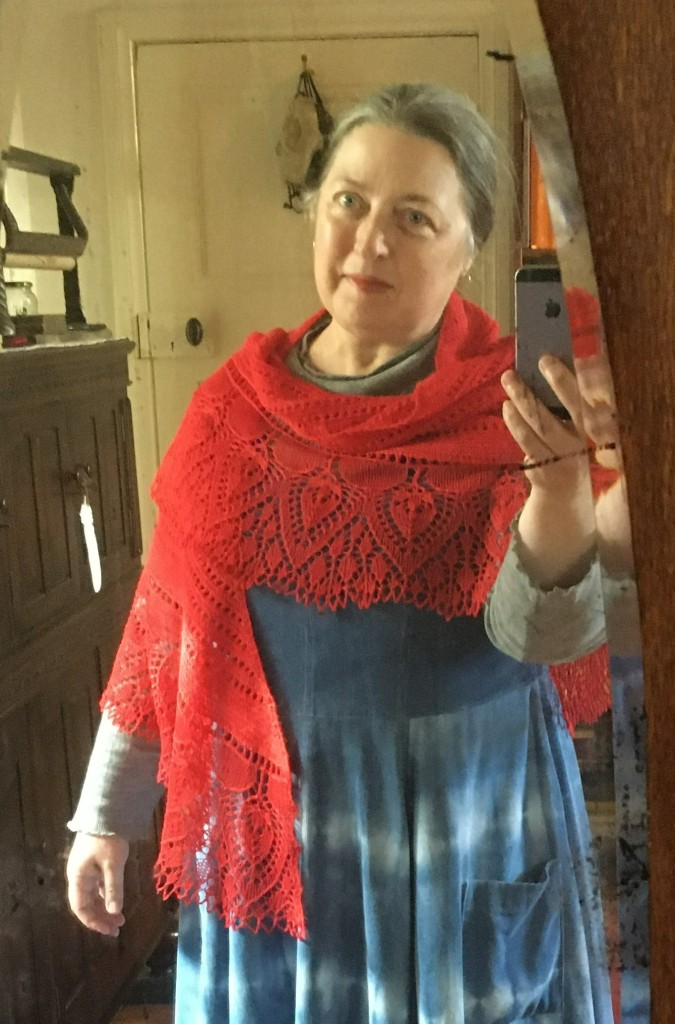
Hmm. I should take those cloth masks down and put them away somewhere. I’ve moved on to N95s.
